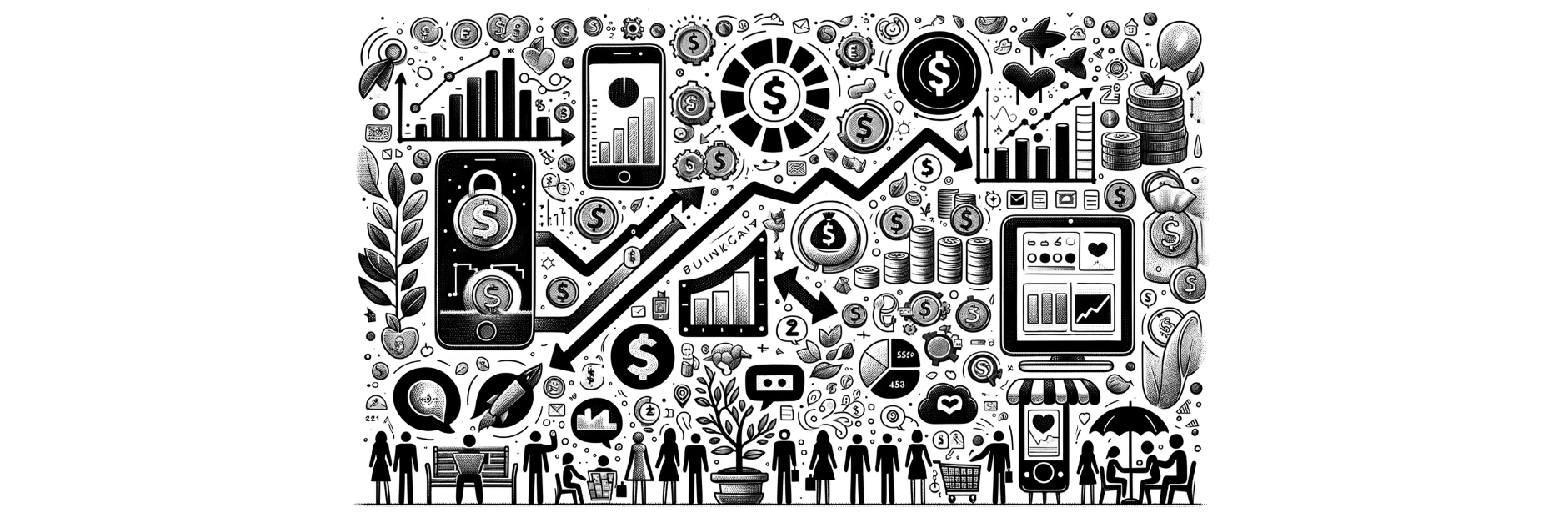How Singapore’s Banking Apps Are Bridging the Financial Literacy Divide
In today’s digital age, the intersection of technology and personal finance has never been more prominent, particularly within the realm of banking apps in Singapore. These platforms have evolved from mere transactional tools into comprehensive financial companions, aiming to demystify and streamline the process of financial planning for the everyday user.
The inspiration for this article sprang from an enlightening conversation I had with a member of the customer experience team from a leading bank at the recent TFC Financial Wellness Festival 2024. Their insights into the challenges and opportunities of designing financial planning tools for a diverse user base sparked a curiosity in me. In the quest to cater to the varying degrees of financial literacy among Singaporeans, should banking apps focus on designing simplified financial planning tools for those who are not financially savvy, or should they venture into more sophisticated financial planning tools to satisfy the demands of the financially literate?
This article aims to explore the merits and potential limitations of both approaches, underscoring the importance of a balanced strategy that fosters financial empowerment for all.
Every week, I’ll be sharing practical tips and invaluable knowledge to guide you on your path to financial independence.
Understanding Who the Customers Are
Singapore’s financial landscape is as varied as its culture, marked by a wide spectrum of financial literacy among its populace. On one end of the spectrum, we have individuals for whom the world of finance seems like a labyrinth, fraught with complex terms and intimidating decisions. These individuals may find the mere thought of financial planning to be overwhelming, deterred by the fear of making erroneous decisions with their hard-earned money. On the other end, there are those who navigate these waters with ease, equipped with the knowledge and confidence to make informed financial decisions, and who, perhaps, seek more than just the basics in financial management tools.
This diversity presents a unique challenge for banks and financial institutions: how to design financial planning tools within their banking apps that can not only cater to this wide range of financial literacy but also empower every user to take control of their finances, regardless of their starting point. The goal is to transform banking apps from mere transactional tools into allies in the journey towards financial wellness, making financial planning an accessible, engaging, and enriching experience for all.
By acknowledging and understanding this varied audience, banks can begin to tailor their digital tools to meet the needs of each customer, ensuring that no one is left behind in the move towards a more financially literate Singapore.
Benefits of Having Simplified Financial Planning Tools
The push towards simplified financial planning tools within banking apps is not just a trend but a necessity, aimed at lowering the entry barrier for those intimidated by the complexities of personal finance. These tools are designed with accessibility at their core, ensuring that even those with minimal financial knowledge can begin their journey towards financial literacy and independence.
Accessibility
Simplified tools democratize the process of financial planning, making it accessible to a broader audience. By stripping down complex financial jargon and processes into digestible, easy-to-understand elements, these tools can help demystify finance for the layperson, encouraging a more significant portion of the population to engage with their financial health actively.
Engagement
A user-friendly interface and straightforward functionalities can significantly enhance engagement. When users are not bogged down by complexities, they’re more likely to explore various financial planning features, from budget tracking to savings goals, thereby fostering better financial habits over time.
The impact of simplified tools extends beyond mere convenience; they serve as a gateway for many to the broader world of financial management and independence. By fostering an environment where financial planning is perceived as approachable and manageable, banking apps can play a pivotal role in improving the financial well-being of their users.
Advantages of Sophisticated Financial Planning Tools
For the financially savvy, the allure of banking apps lies not in their ability to perform basic transactions but in their sophisticated financial planning tools. These tools offer a deeper dive into the world of personal finance, providing detailed analytics, customizable options, and the ability to forecast financial futures with precision.
Empowerment
Sophisticated tools are about empowerment. They offer users a comprehensive overview of their financial landscape, enabling informed decision-making and strategic planning. For those with a strong grasp of financial concepts, these tools are invaluable, allowing for a level of detail and control that basic tools simply cannot match. Whether it’s optimizing investment returns or planning for tax efficiency, sophisticated tools put the power firmly in the hands of the user.
Competitive Edge
In a competitive financial marketplace, banks that offer advanced tools can differentiate themselves. These tools attract a discerning clientele who not only demand more from their financial services but are also likely to engage more deeply with the app’s offerings. For banks, this means a more engaged and potentially more profitable user base, which can drive further innovation and improvement.
Sophisticated tools recognize that financial planning is a highly individualized process. They cater to those who view their finances not just as something to be managed, but as a key part of their overall life strategy. For these users, advanced tools are not just a nice-to-have; they’re essential.
Bridging the Financial Literacy Gap
In the evolving landscape of personal finance, the dichotomy between simplified and sophisticated tools within banking apps presents a unique opportunity rather than a challenge. The key lies in bridging the gap, creating an ecosystem within banking apps that caters to both ends of the financial literacy spectrum.
The future of financial planning tools in banking apps could see the emergence of adaptive interfaces—systems that tailor their complexity based on user behavior, preferences, and feedback. This dynamic approach could allow users to start with simplified tools and gradually unlock more sophisticated features as their financial literacy grows. For instance, a user might begin with basic budgeting tools and, over time, as they become more comfortable and express interest in exploring further, the app could introduce them to advanced investment analytics or customizable financial dashboards.
Moreover, the integration of artificial intelligence (AI) and machine learning could personalize the user experience, offering recommendations, insights, and financial advice tailored to individual goals and risk profiles. This not only enhances the user experience but also fosters a deeper understanding and engagement with one’s financial health.
By adopting a hybrid model that offers both simplicity for the newcomer and depth for the financially adept, banking apps can become true partners in their users’ financial wellness journey. This approach acknowledges and respects the diversity of financial knowledge and needs among Singaporeans, ensuring that everyone, regardless of their starting point, has access to tools that empower them to achieve their financial goals.
Conclusion
The debate between simplification and sophistication in the design of financial planning tools within banking apps is reflective of a larger conversation about financial inclusion and empowerment in Singapore. From my recent interaction with the customer experience team at the TFC Financial Wellness Festival 2024, it became clear that the future of financial planning tools must be inclusive, adaptive, and user-centric. It’s not merely a question of whether banking apps should cater to the financially un-savvy or the financially savvy. Instead, the focus should be on creating a seamless, flexible platform that evolves with the user’s financial literacy journey, encouraging growth, learning, and engagement at every step.
By embracing a hybrid model that intelligently integrates both simplified and sophisticated tools, banking apps can serve a dual purpose. They can demystify the world of finance for beginners, making financial planning accessible and engaging, while also providing deep, actionable insights for those who seek to optimise their financial strategy. This approach not only broadens the appeal of banking apps but also supports the financial well-being of Singaporeans from all walks of life.
As we look to the future, it’s essential for financial institutions to continue this dialogue with their customers, understanding their needs, challenges, and aspirations. The design of financial planning tools should be an ongoing, collaborative process, one that adapts to the changing landscape of personal finance and technology. In doing so, banking apps can transcend their traditional roles, becoming trusted advisors and partners in our financial wellness journey.
Whether through simplified or sophisticated tools, the ultimate goal remains clear: to empower every Singaporean with the knowledge, confidence, and tools they need to achieve financial independence and security. The path to financial literacy is a journey, and it is one that banking apps are uniquely positioned to facilitate and enrich.

